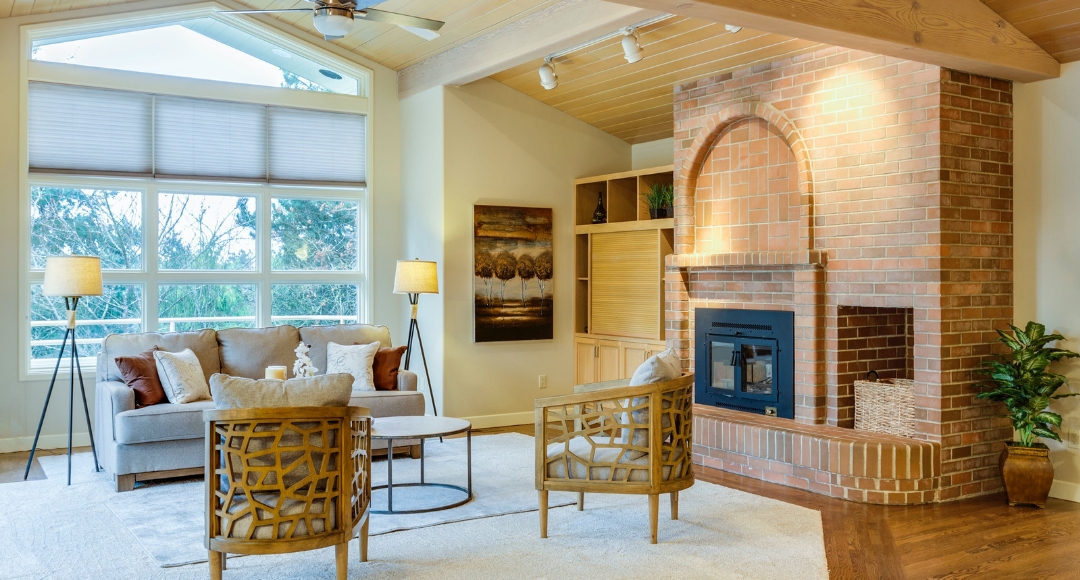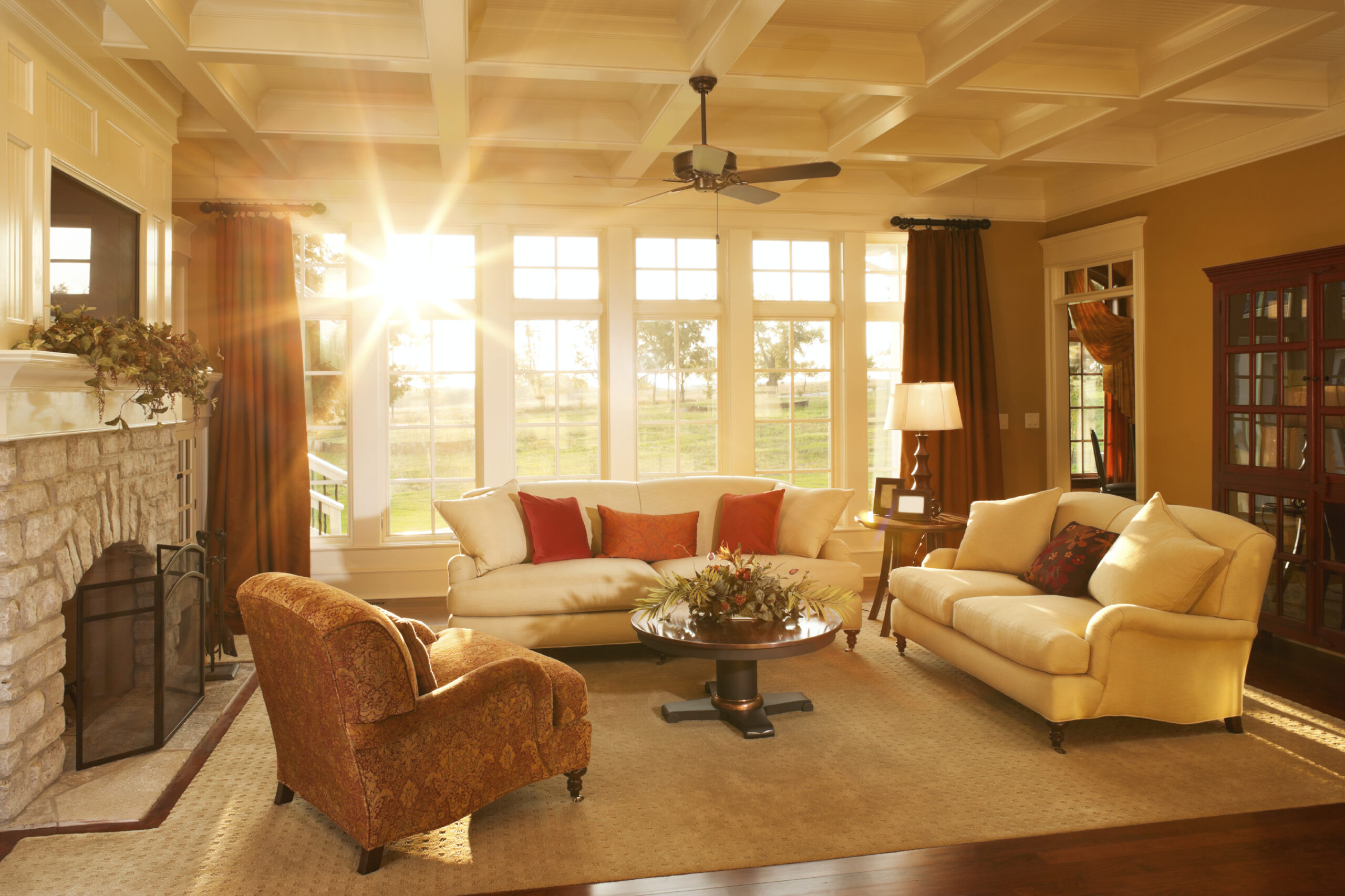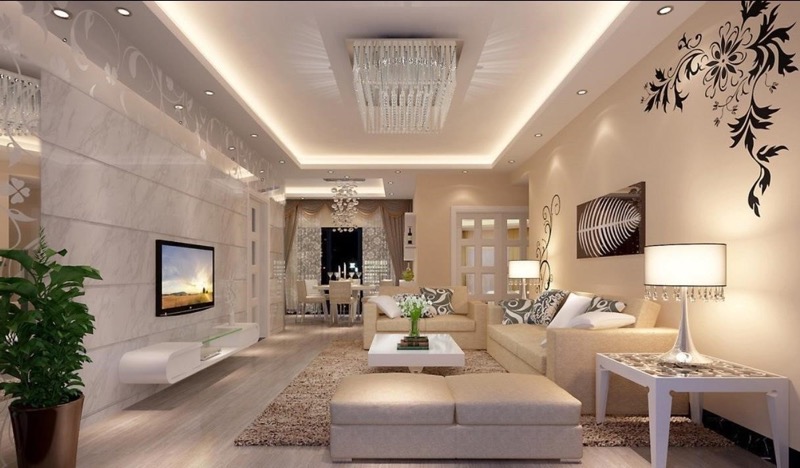The Importance of Lighting in Home Atmosphere: Creating A Warm And Inviting Atmosphere In Your Home With Lighting

Lighting plays a crucial role in shaping the mood and ambiance of a home. It can transform a space from sterile and cold to warm and inviting, influencing how we feel and interact within our surroundings. Understanding how different types of lighting affect our emotions and behavior is essential for creating a home that reflects our personal style and fosters a sense of well-being.
The Impact of Lighting on Mood and Ambiance
The type of lighting used in a home can significantly impact the overall mood and ambiance.
- Warm white light, with a color temperature of 2700-3000K, creates a cozy and intimate atmosphere, often associated with relaxation and comfort. This type of lighting is ideal for living rooms, bedrooms, and dining areas, where people gather to unwind and socialize.
- Cool white light, with a color temperature of 4000-4500K, emits a brighter and more energetic feel, often used in kitchens, bathrooms, and workspaces to promote alertness and focus. This type of lighting is suitable for tasks requiring concentration and precision.
- Natural light, when available, is the most versatile and beneficial type of lighting. It provides a sense of spaciousness, enhances the vibrancy of colors, and promotes a sense of well-being. Maximizing natural light through large windows and skylights can significantly improve the mood and atmosphere of a home.
The Psychological Impact of Lighting
Different lighting schemes can have a profound impact on our emotions and behavior.
- Warm, soft lighting can create a sense of calmness and relaxation, promoting feelings of security and comfort. This type of lighting is often used in bedrooms and living rooms to create a soothing atmosphere conducive to rest and relaxation.
- Bright, cool lighting can stimulate alertness and focus, making it ideal for workspaces and kitchens. However, excessive use of bright lighting can lead to eye strain and fatigue, making it important to balance the intensity and color temperature to avoid discomfort.
- Dim lighting can create a romantic and intimate atmosphere, often used in dining rooms and bedrooms to enhance the mood and encourage connection. However, excessive dimness can create a sense of claustrophobia and hinder visibility, making it important to strike a balance.
Creating a Warm and Inviting Living Room

A well-lit living room is the heart of a home, welcoming family and friends to relax, connect, and enjoy each other's company. Creating a warm and inviting ambiance in your living room can be achieved with a thoughtful lighting plan that balances functionality and atmosphere.
Types of Light Fixtures for a Cozy Living Room
The key to a cozy living room is layering light, using a combination of different types of light fixtures to create depth and warmth.
- Table Lamps: Table lamps offer focused light, perfect for reading corners or accentuating artwork. Their warm glow adds a touch of intimacy and sophistication.
- Floor Lamps: Floor lamps provide a broader, more ambient light, ideal for illuminating a larger area. They can be positioned strategically to create pools of light and shadows, adding depth and dimension to the space.
- Chandeliers: Chandeliers can be a dramatic focal point, adding elegance and grandeur to a living room. They are often used in the center of the room, providing a bright, overhead light source.
- Recessed Lighting: Recessed lights are often used for general illumination, providing a subtle and even light throughout the room. They can be combined with other light sources to create a balanced lighting scheme.
- Sconces: Sconces, mounted on the walls, offer a decorative and functional lighting solution. They can be used to highlight artwork or create a cozy reading nook.
Light Bulbs and Their Characteristics
Choosing the right light bulbs is crucial for creating the desired ambiance. Different types of light bulbs have distinct characteristics, including color temperature, brightness, and energy efficiency.
| Light Bulb Type | Color Temperature (Kelvin) | Brightness (Lumens) | Energy Efficiency |
|---|---|---|---|
| Incandescent | 2700-3000K | 750-1500 Lumens | Low |
| Halogen | 2700-3200K | 800-1600 Lumens | Moderate |
| LED | 2700-6500K | 400-1600 Lumens | High |
| CFL (Compact Fluorescent) | 2700-6500K | 400-1600 Lumens | Moderate |
Note: Color temperature is measured in Kelvin (K). A lower Kelvin value indicates a warmer, yellower light, while a higher Kelvin value indicates a cooler, bluer light. Brightness is measured in Lumens.
Setting the Mood in the Bedroom

The bedroom is your sanctuary, a space for rest, relaxation, and rejuvenation. Lighting plays a crucial role in creating the right atmosphere for sleep and promoting a sense of calm.
Creating a Calming and Inviting Atmosphere
Achieving a serene bedroom environment starts with understanding how light affects our sleep and mood. Warm, soft lighting is known to trigger the production of melatonin, a hormone that regulates sleep cycles. This helps in creating a relaxed atmosphere, making it easier to unwind and fall asleep. Conversely, bright, blue-toned light can suppress melatonin production, making it harder to relax and sleep.
Here are some lighting techniques for creating a calming and inviting atmosphere in your bedroom:
- Dimmers: Invest in dimmers for your overhead lights. This allows you to adjust the brightness level, creating a soothing ambiance as you transition from evening activities to bedtime.
- Soft Lighting: Use soft, warm-toned light bulbs for bedside lamps and other fixtures. Consider using dimmable bulbs to further control the light intensity.
- Bedside Lamps: Bedside lamps provide a gentle source of light for reading or simply creating a cozy atmosphere. Choose lamps with soft, diffused light, avoiding harsh glare.
- Ambient Lighting: Consider using string lights or fairy lights to add a touch of warmth and ambiance to your bedroom. These lights can create a soft glow, perfect for creating a relaxing atmosphere.
- Avoid Blue Light: Minimize the use of electronic devices in the hour before bedtime. The blue light emitted from these devices can disrupt your sleep patterns.
Using Different Types of Light Bulbs
Choosing the right type of light bulb can significantly impact the mood and atmosphere of your bedroom.
- Incandescent Bulbs: These bulbs emit a warm, yellow light that is ideal for creating a relaxing atmosphere. However, they are not as energy-efficient as other options.
- Halogen Bulbs: Halogen bulbs produce a bright, white light that is similar to natural daylight. While they are more energy-efficient than incandescent bulbs, they can be quite warm to the touch.
- LED Bulbs: LED bulbs are the most energy-efficient option and offer a wide range of color temperatures. Choose warm white or soft white LED bulbs for a soothing ambiance.
- Smart Bulbs: Smart bulbs allow you to control the brightness, color temperature, and even schedule lighting with your smartphone. This provides a high level of customization for creating the perfect bedroom atmosphere.
Enhancing Functionality and Aesthetics in the Kitchen
The kitchen, often considered the heart of the home, demands a balanced lighting scheme that caters to both functionality and aesthetics. A well-lit kitchen not only enhances the enjoyment of culinary pursuits but also creates a welcoming and inviting ambiance.
Task Lighting for Kitchen Functionality
Task lighting plays a crucial role in the kitchen, providing focused illumination for specific activities like cooking, food preparation, and cleaning. Adequate task lighting minimizes eye strain and enhances accuracy, ensuring a seamless and enjoyable culinary experience.
- Under-cabinet lighting: Mounted beneath cabinets, under-cabinet lighting provides focused illumination directly onto countertops and workspaces, ideal for food preparation and chopping. LED strips, puck lights, and fluorescent fixtures are popular options.
- Pendant lights: Suspended from the ceiling, pendant lights offer focused illumination over specific areas, such as islands or kitchen sinks. Their adjustable height and stylish designs enhance both functionality and aesthetics.
- Recessed lighting: Flush-mounted in the ceiling, recessed lighting provides general illumination, but can also be strategically placed to highlight specific areas, such as the stovetop or kitchen island. LED recessed lights are energy-efficient and long-lasting.
Creating a Balanced Lighting Scheme in the Kitchen
Balancing task lighting with ambient lighting creates a harmonious and inviting kitchen atmosphere. Ambient lighting provides general illumination, while task lighting offers focused illumination for specific activities.
- Ambient lighting: Use a combination of ceiling fixtures and wall sconces to create a warm and inviting ambient glow. Recessed lighting, chandeliers, and track lighting can be incorporated to provide general illumination.
- Task lighting: Integrate under-cabinet lighting, pendant lights, and dedicated task lighting fixtures to provide focused illumination for specific tasks, ensuring adequate visibility for food preparation, cooking, and cleaning.
Choosing the Right Light Bulbs for Different Kitchen Tasks
Selecting the right light bulbs is crucial for achieving optimal lighting in the kitchen. Different tasks require different types of light bulbs to ensure adequate visibility and create a comfortable atmosphere.
- Cooking: For cooking, opt for warm white light bulbs (2700-3000K) that provide a warm and inviting ambiance, while still offering adequate visibility for monitoring food.
- Food preparation: For food preparation, choose cool white light bulbs (3500-4100K) that provide bright and clear illumination, enhancing color accuracy and detail for chopping, measuring, and mixing.
- Cleaning: When cleaning, bright white light bulbs (4500-6500K) offer the most visibility, revealing dust and grime effectively.
Outdoor Lighting for a Welcoming Atmosphere
Outdoor lighting can transform your home's exterior, enhancing its curb appeal and creating a sense of security. It also extends the usability of your outdoor spaces, allowing you to enjoy them even after sunset.
Types of Outdoor Lighting Fixtures, Creating a warm and inviting atmosphere in your home with lighting
Outdoor lighting fixtures come in various styles and functionalities, each suited for specific purposes. Here's a look at some common types:
- Path lights: These low-voltage lights are ideal for illuminating walkways and pathways, ensuring safe navigation at night. They often feature a warm, inviting glow, guiding visitors towards your entrance.
- Spotlights: Spotlights are perfect for highlighting architectural features, trees, or sculptures, adding visual interest and depth to your landscape. They can be used to create dramatic effects, emphasizing specific elements of your outdoor design.
- String lights: String lights offer a whimsical and festive touch to any outdoor space. They create a cozy and inviting ambiance, perfect for gatherings and entertaining. They can be draped across patios, strung around trees, or hung from eaves, adding a touch of magic to your outdoor setting.
Creating a Warm and Inviting Ambiance
Outdoor lighting can be strategically used to create a welcoming and inviting atmosphere for your outdoor spaces. Here are some examples:
- Warm white lighting: Warm white lights create a cozy and inviting ambiance, perfect for relaxing evenings spent on your patio or deck. They mimic the natural glow of candlelight, creating a warm and inviting atmosphere.
- Layered lighting: Combining different types of lighting, such as path lights, spotlights, and string lights, can create a multi-dimensional and dynamic effect. Layered lighting adds depth and interest to your outdoor space, enhancing its visual appeal.
- Accent lighting: Spotlights can be used to accentuate specific features of your landscaping, such as a beautiful tree, a water fountain, or a sculpture. This adds visual interest and creates focal points in your outdoor space.
Energy-Efficient Lighting Solutions

Creating a warm and inviting atmosphere in your home doesn't have to come at the expense of your energy bill. Energy-efficient lighting options offer a balance between ambiance and sustainability, allowing you to illuminate your home while reducing your environmental footprint and saving money.
Types of Energy-Efficient Lighting
There are several energy-efficient lighting options available, each with its unique advantages and disadvantages.
- LED Bulbs: LED bulbs are the most energy-efficient option, consuming significantly less energy than traditional incandescent bulbs. They also last longer, typically lasting up to 25 times longer than incandescent bulbs. LEDs are available in various colors and brightness levels, making them suitable for different applications throughout your home.
- CFL Bulbs: CFL bulbs, or compact fluorescent lamps, are another energy-efficient option. While they consume less energy than incandescent bulbs, they are not as energy-efficient as LEDs. CFLs also contain mercury, which requires proper disposal.
Advantages and Disadvantages of Energy-Efficient Lighting
- Advantages:
- Energy Savings: Energy-efficient lighting options consume significantly less energy than traditional incandescent bulbs, resulting in lower electricity bills. For example, switching from a 60-watt incandescent bulb to a 10-watt LED bulb can save you over $7 in energy costs per year.
- Longer Lifespan: Energy-efficient bulbs last significantly longer than traditional incandescent bulbs, reducing the frequency of bulb replacements and saving money on replacement costs.
- Environmental Benefits: By consuming less energy, energy-efficient lighting options contribute to reducing greenhouse gas emissions and promoting a more sustainable lifestyle.
- Disadvantages:
- Higher Initial Cost: While energy-efficient bulbs offer long-term savings, their initial purchase price may be higher than traditional incandescent bulbs.
- Light Quality: Some energy-efficient bulbs, especially older CFLs, may emit a slightly different color temperature or have a less desirable light quality compared to incandescent bulbs.
- Disposal Considerations: CFL bulbs contain mercury, which requires proper disposal. LED bulbs, while more environmentally friendly, may also require special recycling procedures in some areas.
Choosing the Right Energy-Efficient Lighting for Your Home
Choosing the right energy-efficient lighting for your home involves considering factors such as the desired light output, color temperature, and application.
- Living Room: For a warm and inviting atmosphere, consider using LED bulbs with a warm white color temperature (2700-3000K) for general lighting. You can also use dimmable LED bulbs to adjust the ambiance based on your mood or activity.
- Bedroom: A cool white color temperature (4000-4500K) may be more suitable for the bedroom, providing a more energizing and focused environment. Dimmable LED bulbs are also ideal for creating a relaxing atmosphere before bedtime.
- Kitchen: For task lighting, use LED bulbs with a bright white color temperature (5000-6500K) to provide clear visibility for cooking and food preparation. Under-cabinet LED lights can be used for additional task lighting and create a modern aesthetic.
- Bathroom: LED bulbs with a cool white color temperature are generally preferred for bathrooms, providing a bright and clean environment. Consider using waterproof LED fixtures for areas exposed to moisture.
Questions and Answers
Creating a warm and inviting atmosphere in your home with lighting - What are some common mistakes people make when choosing lighting for their homes?
One common mistake is using only overhead lighting, which can create a harsh and uninviting atmosphere. Another is neglecting to consider the color temperature of light bulbs, which can significantly affect the mood of a space.
How can I create a more inviting atmosphere in my home without spending a lot of money?
You can start by adding lamps to different areas of your home, using dimmers to adjust the brightness of your lights, and incorporating candles or fairy lights for a touch of warmth and ambiance. You can also consider painting your walls in warm colors to enhance the overall feeling of coziness.
